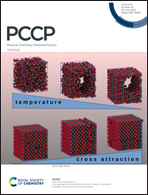High power zinc iodine redox flow battery with iron-functionalized carbon electrodes†
Abstract
The zinc iodine (ZI) redox flow battery (RFB) has emerged as a promising candidate for grid-scale electrical energy storage owing to its high energy density, low cost and environmental friendliness. In this work, ZI RFBs were made with electrodes comprising carbon nanotubes (CNT) with redox-active iron particles, yielding higher discharge voltages, power densities, and 90% lower charge transfer resistances compared to cells with inert carbon electrodes. Analysis of the polarization curves reveals that cells with iron-containing electrodes have lower mass transfer resistances and 100% increase in power density (44 mW cm−2 to 90 mW cm−2) at 110 mA cm−2 relative to cells with inert carbon electrodes.



 Please wait while we load your content...
Please wait while we load your content...